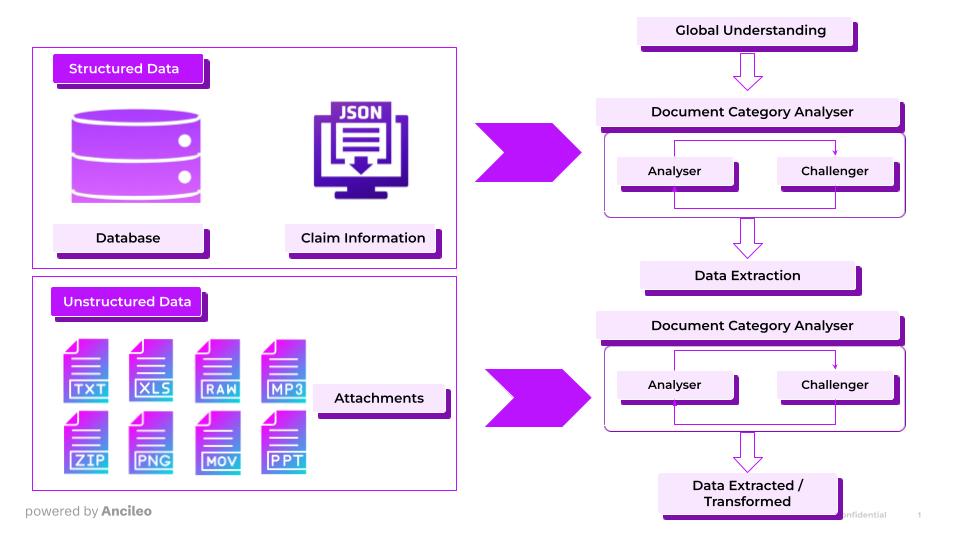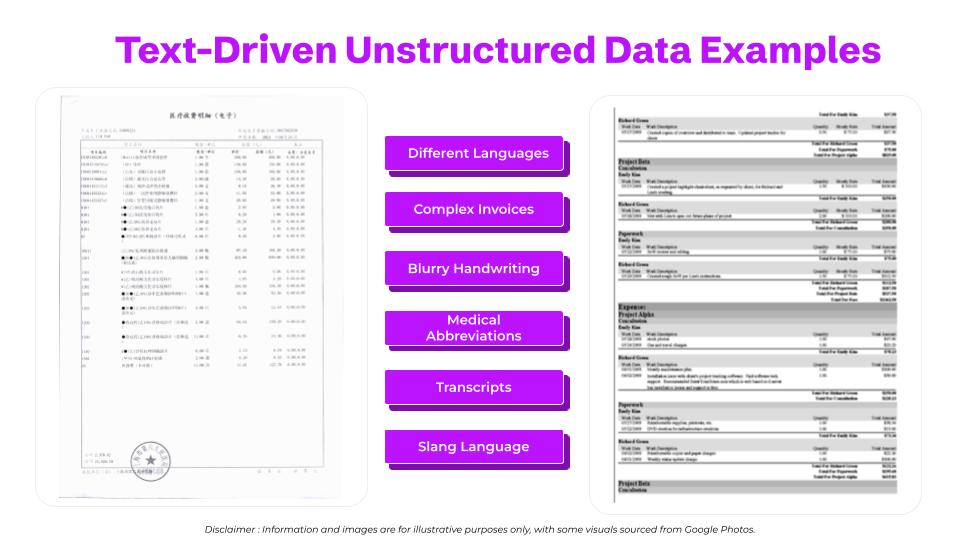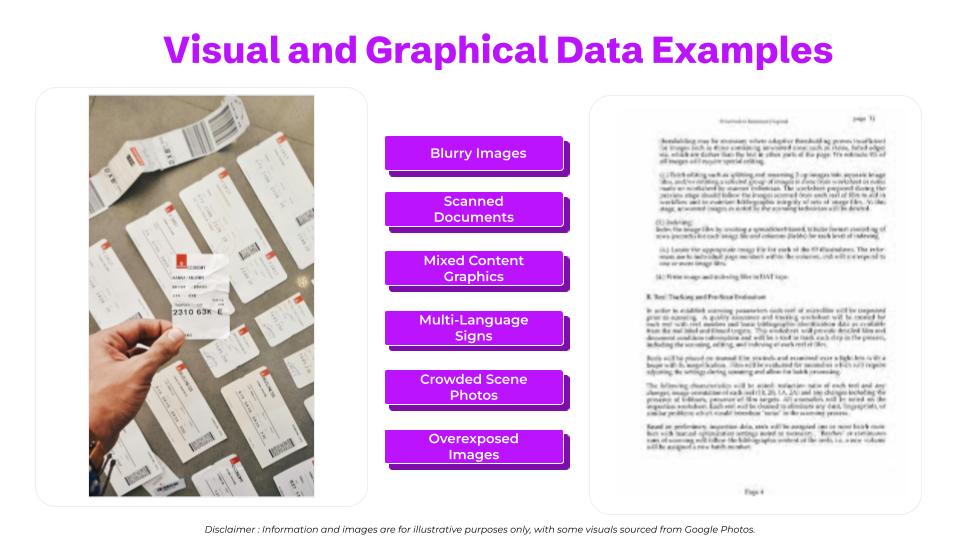
Building an enterprise-level AI module for travel insurance claims is complex. Claims processing requires handling diverse data formats, interpreting detailed information, and applying judgment beyond simple automation.
When developing Lea’s AI claims module, we faced challenges like outdated legacy systems, inconsistent data formats, and evolving fraud tactics. These hurdles demanded not only technical skill but also adaptability and problem-solving.
In this article series, we’ll share the in-depth journey of building Lea’s AI eligibility assessment module: the challenges, key insights, and technical solutions we applied to create an enterprise-ready system for travel insurance claims processing.
Travel insurance claims processing is complex and filled with unpredictable data, requiring a system built to handle unexpected data patterns effectively.
At Ancileo, our journey to build a real-time AI claims module was anything but straightforward. Traditional AI solutions, like the classic LLM-ETL (Large Language Model – Extract, Transform, Load) pipeline, rely on batch processing and offline databases. Our challenge was clear: design a system capable of parsing, normalizing, and transforming unstructured, multi-format claim documents.
Consider a traveler whose return flight was canceled, compelling them to purchase an alternative ticket at a significantly higher cost. They promptly submit a claim for reimbursement, but delays in claim processing prolong their financial burden and test their trust in their insurance provider.
In such scenarios, speed and accuracy are essential for ensuring a seamless recovery from travel disruptions and maintaining customer satisfaction.
Travel insurance claims data comes in a wide range of formats—structured data such as JSON files from digital claims forms and unstructured data such as scanned receipts, PDFs, or images of handwritten documents, including medical bills, flight itineraries, police reports, or compensation notes.
Each document type serves a specific purpose. For instance:
It is common for a single claim to include multiple incidents, requiring distinct sets of supporting documents. For example, a traveler may simultaneously file for reimbursement of delayed baggage essentials and a trip cancellation due to a family emergency. Each claim component must be correctly categorized and assessed individually to ensure accurate processing
Claim submissions often arrive in disarray:
These challenges cause bottlenecks in the processing pipeline, impacting the speed and precision needed for real-time claims assessment. Resolving these issues requires a system that can classify, analyze, and extract actionable data from both structured and unstructured sources, regardless of format or quality.
To address these challenges, Lea’s AI module includes a dedicated sub-module, Agentic Graph, which analyzes, classifies, and extracts data from claim documents. It uses a type- and key-value-based mapping system to link relevant documents with specific events under assessment.
Agentic Graph functions as the document-handling core of Lea’s AI claims module, processing both structured and unstructured data in real time. This system enables flexibility and iterative refinement in document categorization and assessment.
Our solution is specifically developed to address the complexities of travel insurance claims processing.

Unstructured data in travel insurance is notoriously complex. We’re not just talking about extracting text from a PDF; we’re dealing with documents that come in a variety of unpredictable formats such as scanned images with complex handwriting such as:

Our Tailor-Made workflow dynamically processes unstructured data by identifying, classifying, and extracting relevant information from a variety of document types. It begins with:
Global Understanding: Using advanced NLP (Natural Language Processing), and computer vision and GenAI, the system identifies document types and recognizes key patterns. It doesn’t matter if the document is a high-quality PDF or a blurry image from a smartphone—our system adapts in real time.
Once a document is processed for initial understanding, it is classified using our Document Category Analyzer. This module leverages deep learning to assign documents into specific categories, such as:
To enhance accuracy and ensure contextual awareness, we’ve developed and implemented an Analyzer and Challenger Protocol:

Our dynamic protocol continuously learns and updates, making real-time adjustments as new data patterns emerge.
Challenge Overcome: By developing this dual-layer verification system, we ensure that even unexpected or anomalous data gets a second look, significantly enhancing classification accuracy.
Travel insurance claims span a wide range of variations. Our Analyzer and Challenger Protocol ensures that discrepancies are identified and resolved, making our system robust and reliable across different regions and data formats.
To ensure data quality, our pipeline includes validation checks that safeguard data integrity. This involves confirming that numeric fields, such as claim amounts, are formatted correctly in the appropriate currency, and that dates adhere to a standardized format like (ISO 8601). Any discrepancies trigger automated alerts or error-correction mechanisms, improving the accuracy and reliability of the extracted data.
Building on this, once unstructured data is processed and categorized, our system moves to a dynamic Data Extraction phase. By classifying each document into a relevant category, our system can load a tailored data extraction schema for that specific category, ensuring highly relevant and precise data extraction instead of generic or incomplete results.
Our AI-driven approach enables the module to:
This adaptive method ensures that data extraction is accurate and contextually appropriate, tailored to each document type for optimal efficiency.
Travel insurance claims often involve multiple perils—distinct risks or incidents that activate coverage, such as trip disruptions, lost baggage, or medical emergencies. Each peril introduces unique processing requirements, including documentation, eligibility criteria, and contextual analysis, making claims inherently complex.
For example:
Each peril must be evaluated through a detailed framework that considers the claim type (what happened), benefit (what is covered), and event (under what circumstances the coverage applies). Accurate data extraction and mapping become crucial for efficient claim processing.
This is where Event Mapping, or Peril Mapping, comes into play. It connects the extracted data to structured fields in our system, ensuring every piece of information is aligned correctly for assessment. Once data is processed, it is transformed into a standardized format, like JSON, with clearly defined fields (e.g., {“patient_id”: “1234”, “claim_amount”: 500, “service_date”: “2023-12-01”}), making it ready for immediate use by the module.
The real challenge lies in dynamically mapping data to one or multiple perils in real time. A single document, such as a hospital bill in a foreign language, might relate to a medical emergency but also serve as evidence for trip interruption coverage. A boarding pass showing a flight delay may need to be cross-referenced with hotel and meal receipts to assess a broader trip disruption claim.
Our event mapping handles this complexity by understanding and organizing vast amounts of information in a structured, actionable format.
For example:
By automating this intricate mapping, we ensure claims are processed swiftly and with a high degree of precision. This advanced, real-time Event Mapping approach not only reduces errors but also enhances the overall customer experience.
By the end of our pipeline, every piece of data—structured or unstructured—has been transformed into a consistent, AI-ready format. This makes it compatible for real-time claims assessment, reducing delays and improving decision-making.
Scalability: Our system learns and adapts, meaning it’s future-proof and ready to handle emerging challenges in travel insurance.
Our AI claims module tackles the practical challenges of unstructured data and complex claim scenarios by enabling precise data handling, event mapping, and real-time processing. Built with adaptability and accuracy in mind, it’s designed to navigate the unique requirements of travel insurance claims.
If optimizing claim processing and improving operational efficiency are priorities for your business, we’re here to help. Let’s connect to explore how our solution can support your needs.